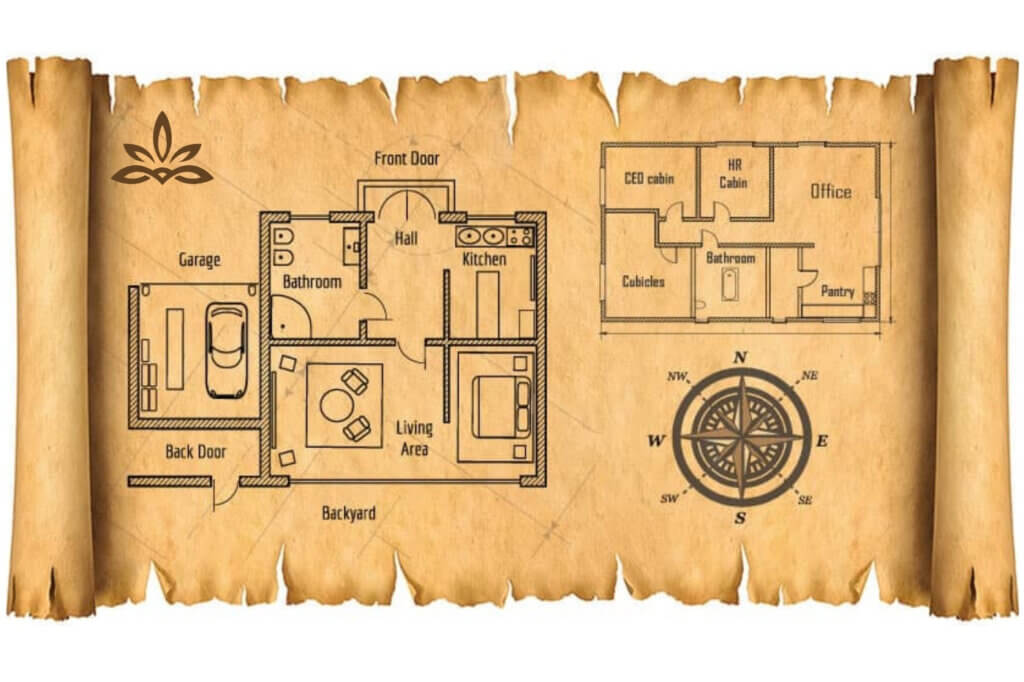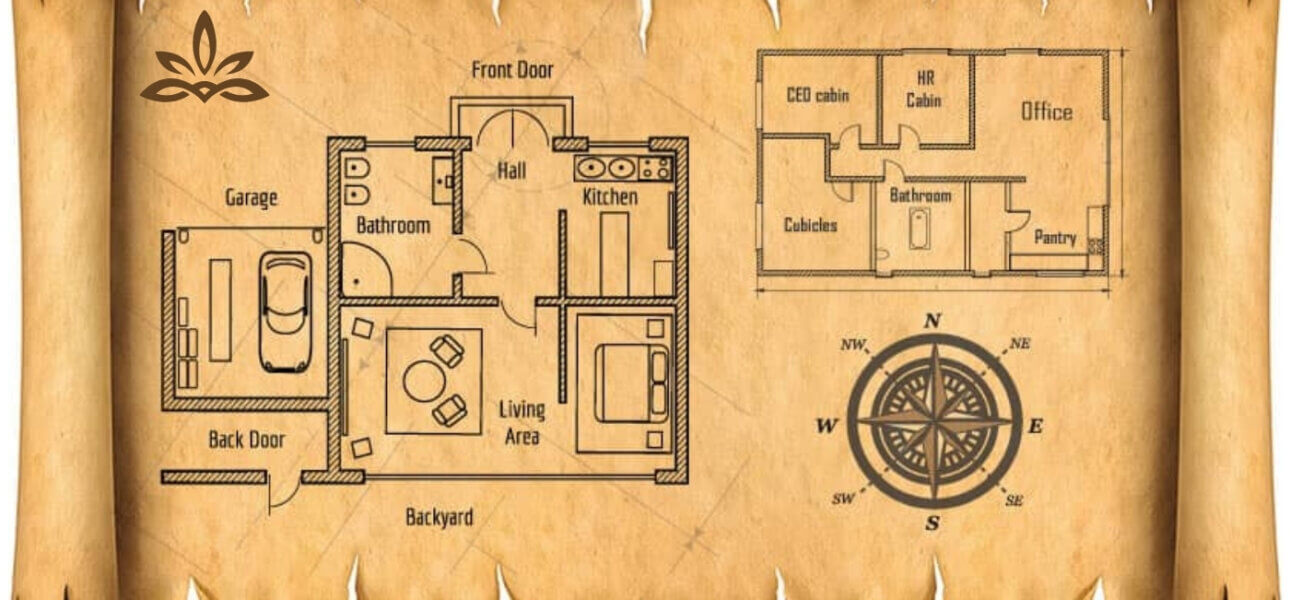A home stands strong when the ground beneath it is correct. Plot leveling is that simple but crucial first step that saves money, avoids headaches, and keeps your home safe through Chennai’s long monsoon. Before you pour a single bag of cement, get the levels right and you will thank yourself for years.

What is Plot Leveling
Plot leveling means shaping the land so the surface has the correct slope, height, and compaction for foundations, drainage, and access. It includes cutting high spots, filling low spots with approved soil, compacting in layers, and confirming levels with basic instruments like dumpy level or auto level.
Why Leveling Matters Before Building
- Prevents water stagnation near the plinth
- Reduces settlement and cracks in foundation and walls
- Improves stormwater flow to street drains in Padappai layouts
- Sets correct reference for plinth level, driveway, and floor heights
- Ensures hassle free approvals and smooth execution schedule
Common Risks If You Skip Leveling
- Rainwater backflow into car porch or ground floor
- Differential settlement that shows as diagonal cracks
- Uneven flooring and door misalignment
- Termite friendly damp pockets around footings
- Extra cost later for rework and raising thresholds
How to Read Your Plot Levels Quickly
- Stand at the road and view the plot from the lowest corner
- Check the abutting road crown and side drain depth
- Identify neighboring plot plinth levels as reference
- Use a straight 3 metre aluminium section with a spirit level for quick checks
- Mark four corner pegs with rope lines to see slope direction
Ideal Slope For Homes In Padappai Oragadam Belt
For most villa plots in the belt, a gentle slope of about 1 in 100 from rear to front is practical. The finished plinth top should be at least 450 to 600 mm above the nearest drain invert. This protects against heavy showers common on GST Road side and the Sriperumbudur Oragadam corridor.
Vastu Plus Practical Slope Orientation
Vastu prefers natural flow to the north or east and a slightly higher southwest. You can achieve this while keeping engineering logic intact. The key is to avoid pushing water towards the house. If your road drain is on the west or south, prioritize safe disposal and then fine tune internal grading to respect Vastu zones like northeast lawn or water feature.
Soil Conditions Around Padappai
- Red soil patches drain faster and compact well with 95 percent Proctor density
- Clayey pockets need more rolling and time to dry between layers
- Filled land requires layer wise compaction in 150 mm lifts
- If you see white crust or soft spots after rain, add muram or granular sub base and recompact
Step by Step Plot Leveling Workflow
- Site clearing and topsoil stripping up to 150 mm
- Temporary benchmarks set using auto level from road reference
- Cut high mounds and fill low pockets with approved soil
- Spread in thin layers and compact using plate compactor or roller
- Lay a 75 to 100 mm muram cap in driveway and around plinth
- Recheck levels at corners, mid points, and entry
- Provide side drains or French drains to guide water to the street drain
- Protect finished platform with silt fence till foundation begins
Drainage During Monsoon
- Create a temporary diversion channel along one side of the plot
- Keep the gate area 100 to 150 mm higher than the inside approach
- Use perforated pipes wrapped in geotextile if the subsoil holds water
- Never block the layout wide drain. Work with the site engineer for a proper outlet
How Leveling Connects To Foundation And Driveway
A consistent finished ground level helps you mark foundation trenches without surprises. It also ensures your driveway gradient is comfortable for cars and two wheelers. Plan the sump, septic tank, rainwater harvesting pit and their cover levels at this stage so lids do not end up below puddles.
Cost And Time You Should Budget
For a typical 1000 to 1500 sq ft plot, allow two to four working days depending on soil and weather. Costs vary with quantity of cut and fill, machine hours, and muram layer. Doing it now prevents far larger expenses during flooring, plumbing, or landscaping.
Quality Checks Before You Proceed To Excavation
- Corner to corner level difference within planned slope
- Compaction achieved without visible rutting under foot
- Water flows to the intended outlet when you hose the ground
- Benchmarks recorded in a simple sketch with dimensions
- Photos taken before and after leveling for your file
Local Touch For Chennai Buyers
In Padappai and Oragadam, layouts often sit slightly lower than main roads. Keep your finished plinth at a sensible height to beat heavy showers and tanker movements on approach roads. If you are considering a DTCP and RERA approved community with ready infrastructure, explore the master planned streets and drains at velammalgarden.com for clarity on final levels and outlet points.
Quick Checklist You Can Carry To Site
- Four corner pegs fixed and protected
- Temporary benchmark marked on a tree or post
- Planned slope marked with arrows on a ground sketch
- Compaction tool available, not just manual ramming
- Outlet to street drain confirmed with the site team
- Photographic record of each stage
Mistakes To Avoid
- Filling with debris or organic soil that will decay and sink
- Over leveling the entire plot flat without a gentle fall
- Starting foundation before the soil dries and gains density
- Ignoring neighbor plinth heights and existing drain invert
- Leaving loose soil near boundary that can erode into the street
How Velammal Garden Makes Leveling Easier
A good layout design starts with road crown, side drains, and plot platforms that respect natural contours. At Velammal Garden in the Padappai Oragadam belt, the internal road network, culverts, and drain lines are planned to handle seasonal rain so your home stays dry and comfortable. You can learn more and book a site visit at velammalgarden.com where our team walks you through levels, plinth planning, and future landscaping.
FAQs
Why is plot leveling important before building
Leveling sets a stable and correct base for your foundation, prevents water stagnation, and aligns plinth, driveway, and room floors properly. It avoids long term cracks and dampness.
What is the ideal slope for a residential plot in Chennai
A gentle fall of about 1 in 100 towards the approved outlet is practical. The plinth should sit 450 to 600 mm above the nearest drain invert to handle monsoon rains.
Can I combine Vastu with engineering slope requirements
Yes. Keep southwest slightly higher while routing water to north or east where feasible. If the road drain is on another side, prioritise safe disposal first and balance Vastu zones within the compound.
How do I know if compaction is enough
Walk the surface after light watering. If your foot sinks or you see rutting, compact again. For driveways and around plinth, a plate compactor or roller is recommended rather than only manual rammers.
What documents should I keep after leveling
Keep the benchmark notes, level readings, quantity of fill used, compaction method, and before after photos. These help your engineer set foundations and also support future resale discussions.
A well leveled plot is the difference between a home that fights water and a home that flows with the land. Give this step the attention it deserves and your build in Padappai will progress faster, cleaner, and safer. For guided site planning and sensible plinth advice in a DTCP and RERA approved community, reach out through velammalgarden.com and plan your home with confidence.


